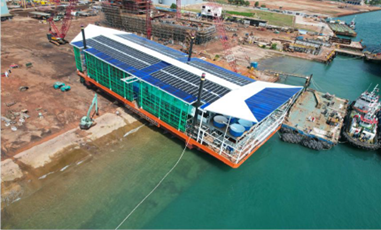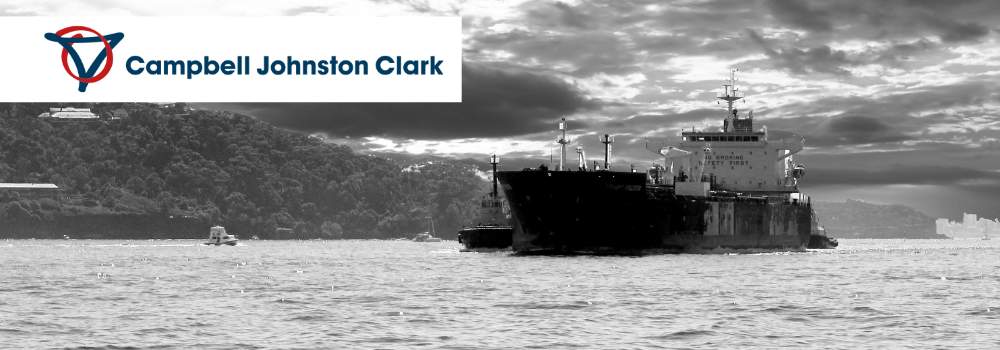As courts of various jurisdictions have found over the last 150 years or so, questions that are easy to ask such as “what is the definition of a ‘ship’?” are not always so easy to answer. Following the conversion of a dumb barge into a “Special Service Floating Fish Farm”, the Singapore Courts were obliged to ask whether the result was a “floating craft of every description used in navigation”.
Vallianz Shipbuilding & Engineering Pte Ltd v Owner of the Vessel “Eco Spark” – [2023] SGHC 353, Singapore High Court (S Mohan J) – 18 December 2023
As courts of various jurisdictions have found over the last 150 years or so, questions that are easy to ask such as “what is the definition of a ‘ship’?” are not always so easy to answer – at least for the purposes of invoking the jurisdiction of their courts to arrest a “ship” in relation to the “many a quaint craft”1 that have put to sea. One solution might be to take the position of the gentleman who dealt with the elephant by saying he could not define an elephant, but he knew what it was when he saw one.2 One might not be to define a “ship or vessel”, but one knows when it is not.
So, does the picture below show a “ship”?

It has no rudders or engines, is not capable of self-propulsion, without any navigational equipment or crew, navigational lights. It has three spud legs embedded into the seabed such that it could not be towed or moved without the use of an offshore crane. Insofar as it could be towed, this would be for the sole purpose of bringing it to the fish farm site. It does not transport any person, cargo, or object. Since installation at the fish farm it has become immovable and will remain so for the duration of its operative life as a sea-based fish farm. It will not spend any part of its operative life traversing the surface of the water. Further, the vessel is unregistered and not classed. It does not pay port dues or other charges to the Maritime and Port Authority of Singapore.
Fishing for answers
This question recently came before the Singapore Courts. The central question was whether under the applicable Singapore legislation the vessel was a “floating craft of every description used in navigation”.
The case concerned the conversion of the dumb barge “WINBUILD 73” into a “Special Service Floating Fish Farm” (“ECO SPARK”). Disputes arose over the sums payable under the conversion contract. The shipyard commenced in rem proceedings against “ECO SPARK” and arrested it in Singapore on the basis that it was “[a] claim in respect of the construction, repair or equipment of a ship …” and that the court’s in rem jurisdiction over the “ship” or “barge” could be invoked pursuant to the High Court (Admiralty Jurisdiction) Act 1961. Both were challenged on the grounds that the “ECO SPARK” was not a “ship”.
In making the application the Claimant argued the “ECO SPARK” was a barge pre-conversion and remained in nature and functionality a barge post-conversion. It need not be self-propelled or have engines, and this did not affect its classification as a vessel or ship. It had spud legs while flagged and classed as a ship. Post-conversion the Vessel was to maintain its class with BV; and was launched and towed to Singapore like any other barge, with the spud legs in place. The placement of the spud legs in the seabed did not make the “ECO SPARK” immovable or a permanent fixture as they were removable and retractable. The Singapore licence required the vessel to be moved if it was a hazard to navigation or other planned sea usage and the fact that it was operating as a fish farm did not mean that it was no longer a ship. Registration was not determinative of whether the vessel was a ship; and it was similar to an oil rig which had been held to constitute ships even though they were fixed to the seabed.
The Singapore Court, after reviewing authorities from England, Ireland, Australia, and Canada thought that it was a ship such that the admiralty jurisdiction of the court was properly invoked. While the “ECO SPARK” did not possess some of the “usual attributes” associated with a ship, it did not regard the absence of those attributes as representing such a drastic departure as to disqualify the vessel from being considered a vessel used in navigation.
In doing so it thought that the definition of “ship” should be interpreted liberally, and different considerations may prevail for different purposes. The English authorities were inconsistent but what could be derived from them was that the irreducible minimum requirement is:
“the capability of the vessel to be used in navigation as a matter of its physical design and construction, ie, whether it is navigable and built to withstand the perils of the sea, irrespective of its actual current use”.
The navigability of a vessel is what gives rise to the risk and danger of it having the ability to be removed from a jurisdiction, thereby defeating legitimate in rem claims, which is one of the reasons a claimant would wish to arrest a vessel.
The “ECO SPARK” had the necessary characteristics because it was capable of navigation in the sense that it could move or be moved and was not unstable, unwieldy, and purely stationary. Although it was a fish farm it was built on top of the existing structure of the dumb barge, “WINBUILD 73”. It had been towed from Singapore to Indonesia for the conversion works to take place after which it was towed back to Singapore for delivery to the Owners. The basic design and structure of the “WINBUILD 73” remained unchanged. It was not incapable of navigation by virtue of being spudded down: the spuds could be retracted or removed and made navigable.
The use as a fish farm was not relevant. There was no need for people or cargo to be carried or for the vessel’s work to involve traversing the water regularly. Lack of classification, registration or flag were not determinative because the Owner had not maintained it in class and the Singapore regulator required it to be in class.
Comment
The English courts have in the past found the following were “ships”: a hopper barge; private motor yacht which had been stationary at its mooring for 15 years; a mobile offshore oil-drilling rig; a RIB being used for a bird watching trip around the coast of Anglesey. In Ireland a backhoe dredger consisting of a floating platform with no bow, no stem, no anchors, no rudder or any means of steering, no keel or skeg, and no means of self-propulsion which when in use was held in position on the seabed by three spud legs which were capable of being hydraulically lowered and raised; and in Canada a floating crane, were also held to be a ships.
However, the following have been held in the English courts not to be “ships”: a raft of timber; a landing-stage; a gas float moored as a beacon; a new building which had not yet been launched and upon which considerable work was required before it could be used in navigation; a new building which had been launched unfinished without engines or boilers; a pontoon crane; a houseboat; a flying boat; a seaplane; a helicopter with pontoons; and a jet-ski. In Australia an ROV; and in Canada a floating drydock, were also held not to be ships.
The judgement very usefully provides a clear analysis of these decisions from other common law jurisdictions, but it is important to bear in mind the context and/or purpose for which the definition was proposed in any case, as well as the exact wording in the relevant provision defining a “ship”. As the court pointed out, the definition of a “ship” for the purposes of deciding whether a collision is covered under an insurance policy or determining whether an offence has been committed may differ from the definition of a “ship” under legislation conferring admiralty jurisdiction and the right to arrest a ship.
The case does not therefore provide answers for questions as to whether other “quaint craft” that put to sea are “ships”, but it is a good starting point; a fuller answer will have to wait for another day.
- See Herman Melville, Moby-Dick, Chapter 16. “You may have seen many a quaint craft in your day, for aught I know; —square-toed luggers, mountainous Japanese junks; butter-box galliots, and what not;”, ↩︎
- Lord Justice Scrutton in Merchants Marine Insurance Co Ltd v North of England Protection & Indemnity Association (1926) 26 Ll L Rep 201 (“Merchants Marine”) at p 202 ↩︎

Chris Kidd, Director, CJC
[email protected]
Image and profile: https://www.cjclaw.com/site/people/profile/chris

